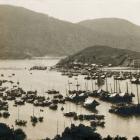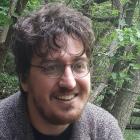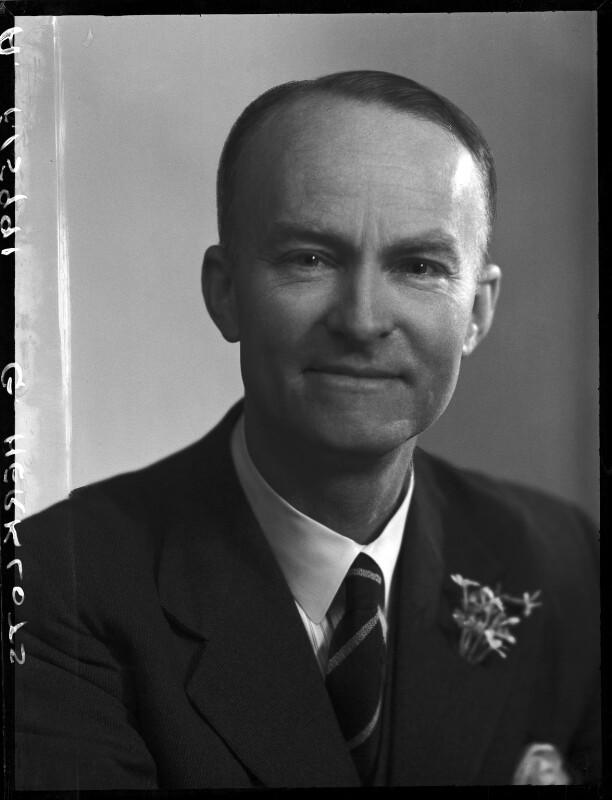
Geoffrey Alton Craig Herklots.
Geoffrey Alton Craig Herklots.
by Elliott & Fry
quarter-plate glass negative, 10 March 1953
Given by Bassano & Vandyk Studios, 1974
Courtesy of National Portrait Gallery. Click here to view source.
 This work is licensed under a Creative Commons Attribution-NonCommercial-NoDerivs 3.0 Unported License.
This work is licensed under a Creative Commons Attribution-NonCommercial-NoDerivs 3.0 Unported License.
When Geoffrey Herklots arrived at The University of Hong Kong (HKU) in 1928, it had been four years since the last full-time biologist taught there. With a newly minted PhD from Cambridge, Herklots’ first major task was to make biology courses compulsory for pre-medical students. While biology was considered by the Faculty of Medicine as merely an “introductory subject” that provided students some foundation for the science of life, Herklots strived for the autonomy of biology education at HKU.
To achieve this, he highlighted the geopolitical significance of biology. In a 1932 memorandum, Herklots suggested that the Republic of China had a huge demand for agricultural and natural resource experts, and by promoting biology at HKU, “there will be no difficulty in establishing the superiority of British science in the East.” He further argued that biology could help the Republic achieve internal stability and thus facilitate British commercial interests in the region. Notably, Herklots pointed out the value of “knowledge of local natural phenomena” in biology education. Apart from the densely populated settlements around the Victoria Harbour, which constituted less than five percent of the land area, the rest of Hong Kong was dominated by a countryside landscape, with paddy fields, forested hills, and tiny villages. Herklots’ vision was to collect and classify the species found in Hong Kong as well as adjacent Southern China, send the specimens back to metropolitan herbaria such as the Kew Garden, and connect HKU to the global network of knowledge production.

Map of Hong Kong’s Tolo Harbour.
Map of Hong Kong’s Tolo Harbour.
Detail from a geological survey map of Hong Kong.
Printed at the Ordnance Survey Office, 1936.
Courtesy of Trove. Click here to view source.
 This work is licensed under a Creative Commons Public Domain Mark 1.0 License.
This work is licensed under a Creative Commons Public Domain Mark 1.0 License.
In 1930, Herklots launched the journal Hong Kong Naturalist to promote biological science in the colony, and Herklots himself published dozens of articles on the local flora and fauna that were intended for a general audience. For example, in April 1937 he wrote an article called “The Lam Tsun Valley”, which documented his visit to Lam Tsun (林村) in the New Territories. He first introduced the geographical features of Lam Tsun:
The valley is broad and the stream is fed along its course by numerous tributaries which have their source either in the Tai-mo-shan [大帽山] group to the South or in the Wong Tai Shan [王泰山] range in the North. (Herklots 1937)
He then discussed the agricultural methods in the region, and recalled his leisurely stroll and the birds he encountered, including grey wagtail, blue magpie, and black-faced babbler. Next, he told a story about “a soldier” and “a sailor” searching for a Chinese koel by mimicking the bird’s song, but “the two senior representatives of His Majesty’s forces emerged side by side finding each other.” This story might be based on the experience of Major Hutson and Lieutenant Commander Hughes, both of whom were amateur ornithologists and contributors to Hong Kong Naturalist. Such combination of naturalist observation, records of local economic activities, and light-hearted anecdotes about British expats exemplified Herklots’ attempt to portray Hong Kong’s countryside as an important site for science, development, and recreation.
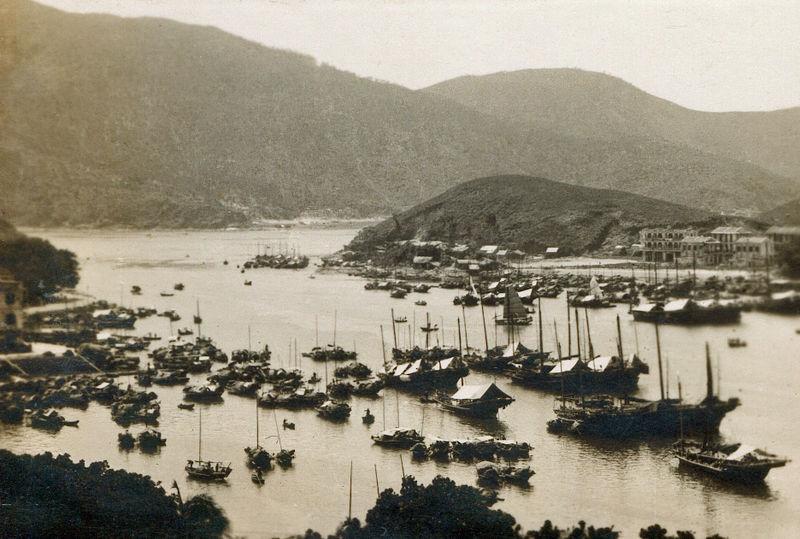
Fishing communities like this is an important part of Hong Kong’s economy and food supply in 1930s.
Fishing communities like this is an important part of Hong Kong’s economy and food supply in 1930s.
Unknown photographer, 1930s.
Accessed via Wikimedia on 17 September 2020. Click here to view source.
 This work is licensed under a Creative Commons Public Domain Mark 1.0 License.
This work is licensed under a Creative Commons Public Domain Mark 1.0 License.
Herklots’ most ambitious effort was his 1938 proposal for a colonial museum which would feature exhibitions as diverse as “prehistory, archaeology, and geology,” “ethnographic sciences,” “biology,” “Chinese arts,” and “industries representative of China.” The proposal, commissioned by the government, envisioned an air-conditioned building comprised of a laboratory, a library, and a grand lecture hall. The mandate of the museum was not only to educate the public about the natural and cultural history of Southern China, but also to serve as a research hub for academics, colonial officials, and patrons to exchange specimens, artefacts, and technoscientific knowledge across the British Empire.
Unfortunately, the escalation of Sino-Japanese War disrupted Herklots’ project. Following the fall of Hong Kong in 1941, Herklots’ knowledge proved to be vital in the Stanley Internment Camp, where he grew vegetables on “Stanley compost” made of rubbish, ashes, grass, and urine. A total of 140 cucumbers were harvested in 1942 alone. He left HKU to join the Development Committee of the Colonial Government in 1945, hoping to reform the fishing industry. His naturalist knowledge was skillfully blended into a political agenda: in one public talk, after discussing his study of local snakes, he began to condemn laissez-faire economics as “the most dangerous snake” that turned a blind eye to exploitative middlemen, and argued that a “planned economy” in agricultural and fishery policies was the only way to counter the threat of communism.
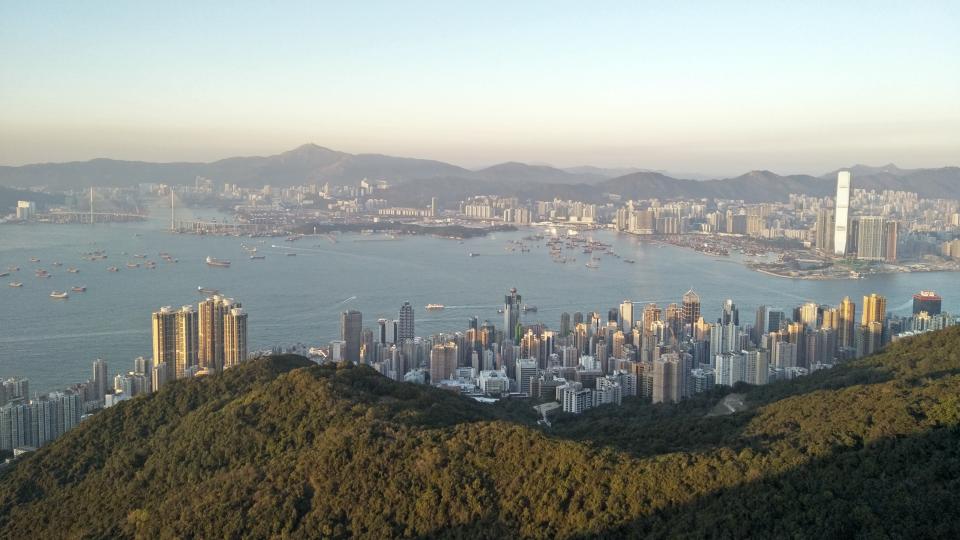
Present-day Hong Kong. Note that the hills surrounding the urban center remain sparsely populated.
Present-day Hong Kong. Note that the hills surrounding the urban center remain sparsely populated.
Photograph by Leo Chu, 2017.
 This work is licensed under a Creative Commons Attribution 4.0 International License.
This work is licensed under a Creative Commons Attribution 4.0 International License.
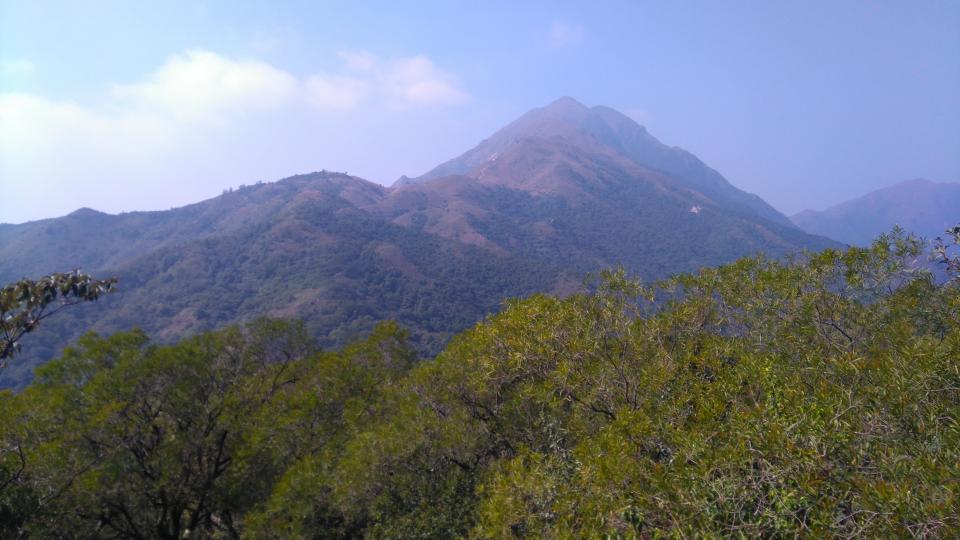
Present-day Yi Tung Mountain at Lantau Island. This site exemplifies the landscape of Hong Kong’s countryside.
Present-day Yi Tung Mountain at Lantau Island. This site exemplifies the landscape of Hong Kong’s countryside.
Photograph by Leo Chu, 2017.
 This work is licensed under a Creative Commons Attribution 4.0 International License.
This work is licensed under a Creative Commons Attribution 4.0 International License.
Nevertheless, Herklots’ scheme for economic reform, as part of the short-lived “Young Plan” that aimed to introduce democratic reform to Hong Kong, found little support in the government. In 1948 he left the colony for the Colonial Office and later the Imperial College of Tropical Agriculture in Trinidad and Tobago. Even though Herklots’ ambition was not realized, his two decades of service in Hong Kong provide interesting materials for environmental historians. On the one hand, his depiction of Hong Kong’s countryside reflects a narrative that is neither the heroic conquest of “hostile nature” nor the romantic lament of “fragile nature,” but the pragmatic appreciation of its aesthetic and utilitarian values. On the other hand, the entanglement between Herklots’ scientific vision and political ambition reflected the importance of environmental knowledge in British Empire. Indeed, Herklots was not the sole scientist trying to create “knowledge of nature” in Hong Kong—the Botanical Garden storing collected specimens, health inspectors searching for contagious microbes, and dairy workers attempting to acclimatize cattle were all actors in this network. How the complex political and scientific practices were influenced by and constructed the environment of Hong Kong should be further investigated.
How to cite
Chu, Leo. “The Empire, the Naturalist, and the Countryside: Biological Science in Colonial Hong Kong.” Environment & Society Portal, Arcadia (Summer 2020), no. 35. Rachel Carson Center for Environment and Society. https://doi.org/10.5282/rcc/9117.
ISSN 2199-3408
Environment & Society Portal, Arcadia
 This work is licensed under a Creative Commons Attribution 4.0 International License.
This work is licensed under a Creative Commons Attribution 4.0 International License.
2020 Leo Chu
This refers only to the text and does not include any image rights.
Please click on the images to view their individual rights status.
- Hayes, James. The Great Difference: Hong Kong’s New Territories and Its People, 1898–2004. Hong Kong: Hong Kong University Press, 2012.
- Herklots, Geoffrey. The Hong Kong Countryside. Hong Kong: The South China Morning Post, 1951.
- Herklots, Geoffrey. “The Lam Tsun Valley.” Hong Kong Naturalist 8, no. 1 (1937): 31–35.
- Greer, Kristen A. “Ornithology on ‘The Rock’: Territory, Fieldwork, and the Body in the Straits of Gibraltar in the Mid-Nineteenth Century.” Historical Geography 37 (2009): 26-52.
- Kraft, Alison. “Pragmatism, Patronage and Politics in English Biology: The Rise and Fall of Economic Biology 1904–1920.” Journal of the History of Biology 37, no. 2 (2004): 213–258.



